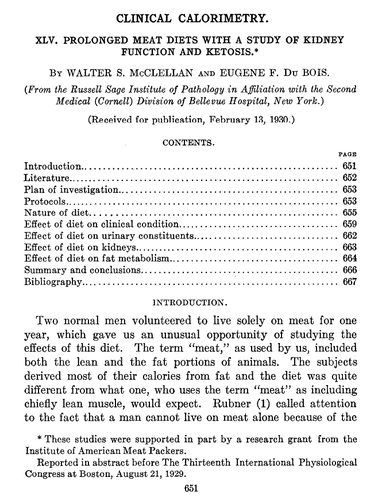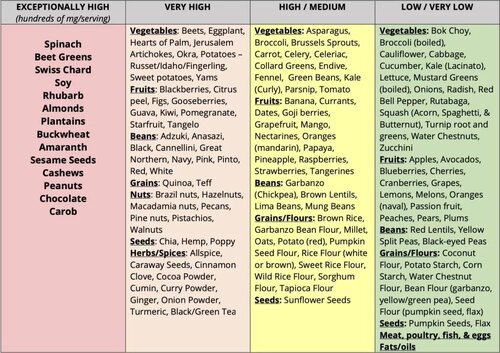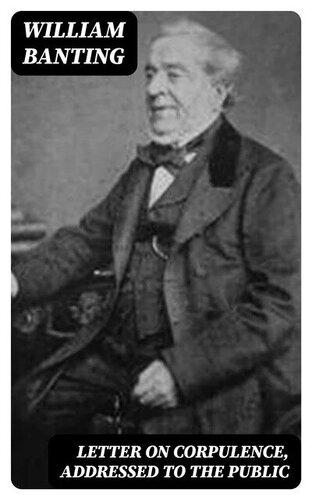Leaderboard
Popular Content
Showing content with the highest reputation since 12/14/2024 in Files
-
Prolonged Meat Diets with a Study of Kidney Function and Ketosis
- 126 downloads
Two men lived on an exclusive meat diet for 1 year and a third man for 10 days. The relative amounts of lean and fat, meat ingested were left to the instinctive choice of the individuals. At the end of the year, the subjects were mentally alert, physically active, and showed no specific physical changes in any system of the body. Vitamin deficiencies did not appear. Kidney function tests revealed no evidence of kidney damage. In these trained subjects, the clinical observations and laboratory studies gave no evidence that any ill effects had occurred from the prolonged use of the exclusive meat diet.3 points -
Oxalate Food Chart
1 point
- 11 downloads
- Version 1.0.0
Another Oxalate reference chart. The oxalate content of food can vary considerably between plants of the same species, due to differences in climate, soil quality, state of ripeness, or even which part of the plant is analyzed. Variations also may be caused by the different methods used for measuring oxalate in food. Published values for some foods can vary from negligible amounts to moderately high. In addition, the soluble oxalate content of a food may influence the amount of oxalate absorbed by the intestine much more than the insoluble part, so foods that have a modest total oxalate content should still be limited because of the relatively high amount of soluble oxalate present.1 point -
Letter On Corpulence Addressed to the Public by William Banting
- 55 downloads
In what's billed as the "world's first diet book," William Banting offered his strategy for losing weight. He ate four meals a day, didn't exercise much, drank alcohol, and swore off only a few foods. And, what's more, anyone familiar with current low-carb diets will find similar advice here -- advice given in 1864. William Banting was a carpenter in Victorian London whose weight spiraled out of control. His eyesight and hearing failed, he had weak knees, and he suffered an umbilical rupture, health problems he attributed to his weight. He consulted doctors but nothing helped. Then Banting discovered this diet and got results within just a few days. He ate lots of meat, a few vegetables, shunned some foods that he's previously overindulged in, and drank alcohol with lunch and dinner. He lost fifty pounds, and his health improved. He published this pamphlet detailing his diet and distributed the copies for free. By its third printing it had sold 63,000 copies, and the term "Banting" became synonymous with "dieting" in England.1 point -
The Fat of the Land (PDF) - Vilhjalmur Stefansson
- 250 downloads
This book is essential reading for anyone who wishes to eat an all-meat diet or wants to learn more about the health benefits of a low-carbohydrate diet of meat and fish. Arctic explorer and anthropologist Vilhjálmur Stefánsson spent years living with indigenous Inuit and Eskimo people. He noted their general healthiness (and good teeth), and an absence of many of the diseases that plagued western cultures, such as scurvy, heart disease, and diabetes. Observing their dietary habits, he determined that their primary food was meat, both lean and fatty, and that their diets were very low in sugary or starchy carbohydrates. Was this meaty diet the key to their good health? The book chronicles a 1928 scientific experiment, conducted by the Russell Sage Institute of Pathology at Bellevue Hospital in New York, in which Stefansson and his colleague Dr. Karsten Andersen ate a meat-only diet for one year. The two men stayed healthy and fared very well, leading him to claim that we should reexamine our notion of what foods constitute a healthy diet. Later chapters promote the benefits of pemmican, a compact, portable, and high-energy food consisting of a concentrated mix of fat and protein made from dried lean bison meat, sometimes mixed with berries. Pemmican is like the original energy bar, and Stefansson spent considerable time and energy urging the military to adopt it for emergency rations.1 point -
My Life with the Eskimo - Vilhjalmur Stefansson
- 57 downloads
Who are the Eskimo peoples? And how do they survive in the freezing conditions of the far north? Vilhjálmur Stefánsson left New York in April 1908 to begin his journey northwards and into the Arctic Circle. For the next two years he made his way northwards to Victoria Island to study an isolated group of Inuit who still used primitive tools and had strong Caucasian features, and whom some believed were descended from Vikings. The journey into these remote areas was incredibly tough and being delayed by blizzards, Stefánsson, along with his companions, were forced to eat the tongue of a beached whale that had been dead for at least four years. Stefánsson, who learnt how to communicate with the Inuit, provides fascinating insight into the beliefs and everyday life of these people. “The book is full of psychologic and human interest, and of clear-cut observation of many different kinds.” The North American Review “This book contains a wealth of ethnological and biological information … this is a valuable contribution to the scientific study of the Eskimos, by one who knows them thoroughly.” The Literary Digest “It is impossible to analyze with certainty the amalgam of motives underlying the ceaseless movement of northern exploration, but the lure of the difficult and the dangerous can hardly be less active than the desire to enlarge bounds of human knowledge.” The Nation This book is essential reading for anyone interested in this remarkable expedition and for people who want to find out more about life of people in the far north prior to the advent of modern technology. Vilhjálmur Stefánsson was a Canadian Artic explorer and ethnologist. Under the auspices of the American Museum of Natural History, New York, he and Dr. R. M. Anderson undertook the ethnological survey of the Central Arctic coasts of the shores of North America from 1908 to 1912. The results of this expedition were My Life with the Eskimo first published in 1913. Stefánsson passed away in 1962.1 point




